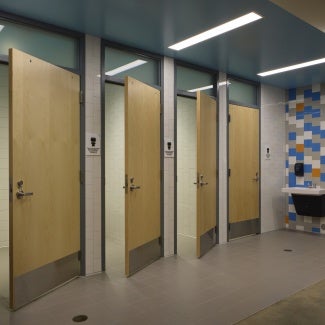Using photography to evaluate on-site work
Contributed by Eric Pempus, FAIA
Chapter 10.09 Construction phase services
Effectively document construction progress while avoiding key mistakes
Summary
Photography is an excellent tool for evaluation of on-site work during construction—and a potential source of risk. The three categories of appropriate subjects outlined here help the architect effectively document construction progress and enhance their field reports, while avoiding key mistakes.
Photography as an evaluation tool
The AIA B101 contract requires evaluations of the on-site work during construction as part of the architect’s responsibilities. This Best Practice provides guidelines for using site photography as a tool to help the architect meet this requirement. In the AIA B101, the contract language states the following:
§ 3.6.2 EVALUATIONS OF THE WORK
§ 3.6.2. The Architect shall visit the site at intervals appropriate to the stage of construction, or as otherwise required in Section 4.3.3, to become generally familiar with the progress and quality of the portion of the Work [italics added] completed, and to determine, in general, if the Work observed is being performed in a manner indicating that the Work, when fully completed, will be in accordance with the Contract Documents. — AIA B101 Standard Form of Agreement Between Owner and Architect
As they become “generally familiar with the progress and quality of the Work,” architects customarily, although not required under the standard agreement, use photography to document work on the site. This photography can be used to “keep the Owner reasonably informed about the progress and quality of the Work.” This Best Practice is about what to photograph and what photographic formats to use, and not about the ever-evolving technology of photography.
What to photograph
Appropriate subjects for site photography fall into three categories: (1) deviations from the contract documents, (2) specific areas where significant construction progress has been made since the previous visit, and (3) the overall progress of the construction. Each category has its own guidelines:
Deviations: Photograph deviations, including defective work, from as many angles as needed to make the nature of the deviation clear. Stand close to the defective work so the defects can be readily seen in the photos. If scale is important, include in the photo either a scale with visible markings in inches or an object with a commonly known size, such as a pen.
Areas Showing Progress: Photograph work that has been performed since the previous visit. These photographs should graphically support your field report descriptions of the work. Frame your photos so only the new work is included.
Overall Progress: Photograph overall views of exteriors or interiors from far enough away so detail is not visible. Indiscriminately snapping numerous shots of the site on each visit will result in a lot of unnecessary photos that will nevertheless be permanently filed. However, these unseen and unneeded photographs could be a risk if a dispute arises. For example, a photo may show a defect that proves to be problematic, but was unnoted in a field report. Not pointing out a photographed defect could result in a negligence claim, since the defect was obviously observable.
Don’t include the faces of construction workers or others in your photos unless it’s unavoidable. If the photos are used for any reason other than a field report, blur people’s faces to protect their identity. (Alternatively, releases will be needed from everyone whose face is recognizable.) Don’t photograph what appear to be unsafe conditions. Instead, report the condition immediately to the contractor’s superintendent.
Photographic formats
A smart phone or a small pocket camera is all that’s needed for site photography; these aren’t intended to be professional-quality photographs. Most site photographs are still images (easier to insert into field reports), but video records will on occasion be needed. Use a flash when needed. Time-lapse photography of the site over a long period of time is usually outside the architect’s scope.
In conclusion
Each photo should be shot for a specific purpose, usually to support specific points in the field report narratives. When used with professional judgment, photographs can effectively document construction progress and enhance field reports.
AIA Legal Disclaimer: This publication is designed to provide accurate information in regard to the subject matter covered. It is published and distributed with the understanding that the publisher is not engaged in rendering professional services. If professional advice or other expert assistance is required, the services of a competent professional person should be sought.
Standard Best Practice Disclaimer: The AIA collects and disseminates Best Practices as a service to AIA members without endorsement or recommendation. Appropriate use of the information provided is the responsibility of the reader.
This article was originally written as a Construction Contract Administration knowledge community white paper, and has been adapted to be an AIA Best Practice.
About the contributor
Eric O. Pempus, FAIA, Esq., NCARB, LEED GA, has been a risk manager for the last 12 years with expertise in architecture, law and professional liability insurance, and a unique and well-rounded background in the construction industry. He has 25 years of experience in the practice of architecture, and is an adjunct professor, teaching professional practice courses at the undergraduate and graduate levels for the last 30 years. As a Fellow of the American Institute of Architects and a member of the AIA National Ethics Council, he has demonstrated his impact on the architectural profession.
Help build AIA Best Practices by contributing your experience. Contact us with your feedback or ideas for an article.



